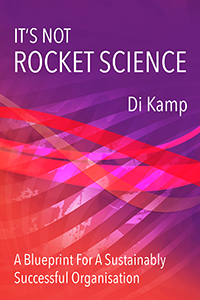Several years ago, I helped a university prepare for a degree course in leadership, which was to be the first of its kind in the UK. My involvement meant that I became interested in the subject of leadership and well read in studies of great leaders. As well as satisfying my interest in the subject, I was keen to discover what I could learn to improve my style. What were the elusive qualities that would turn me into a great leader? The trouble was, the more I read, the more elusive they became.
My work at Meta brings me in touch with many leaders and I see daily examples of leadership, both good and bad. Whilst I still read about leadership, I have, at last, come to realise what the elusive ingredient actually is and why I, nor others, can ever replicate it.
Great leaders excel in being themselves. Their qualities and beliefs shine through and captivate others. People recognise their honesty, consistency and integrity in what they do. When there is this congruence, people are able to connect with the leader’s purpose, what they stand for and what he or she is striving for. It all makes sense. In an uncertain world, the good leader offers some certainty that people can understand and choose to follow. So we no longer need to strive to be like other leaders or to become excellent in all the leadership “competencies”. We just need to understand what qualities we possess as leaders and allow these to shine through.
So I want you to think about your own qualities as a leader…
- Ask yourself what you are proud of about yourself and how you lead? What is it that people say about you that they like and admire? Is it your sense of purpose, your doggedness, your humility, your sense of humour, your ability to tell a story, your vision….
- How do you demonstrate these qualities as a leader? Are there some that you tend to suppress? How are you going to show people more of the “real you”? When people see you shine through, the more they will trust your integrity and purpose and the more they will respect you as a person and as their leader.
- Spend some time thinking about leaders that inspire you. What qualities do they have that you admire? Can you learn to develop some of these in a way that will become natural for you? Take your time, don’t rush. After all, you don’t want your light to shine less by trying to be in someone else’s shadow!



